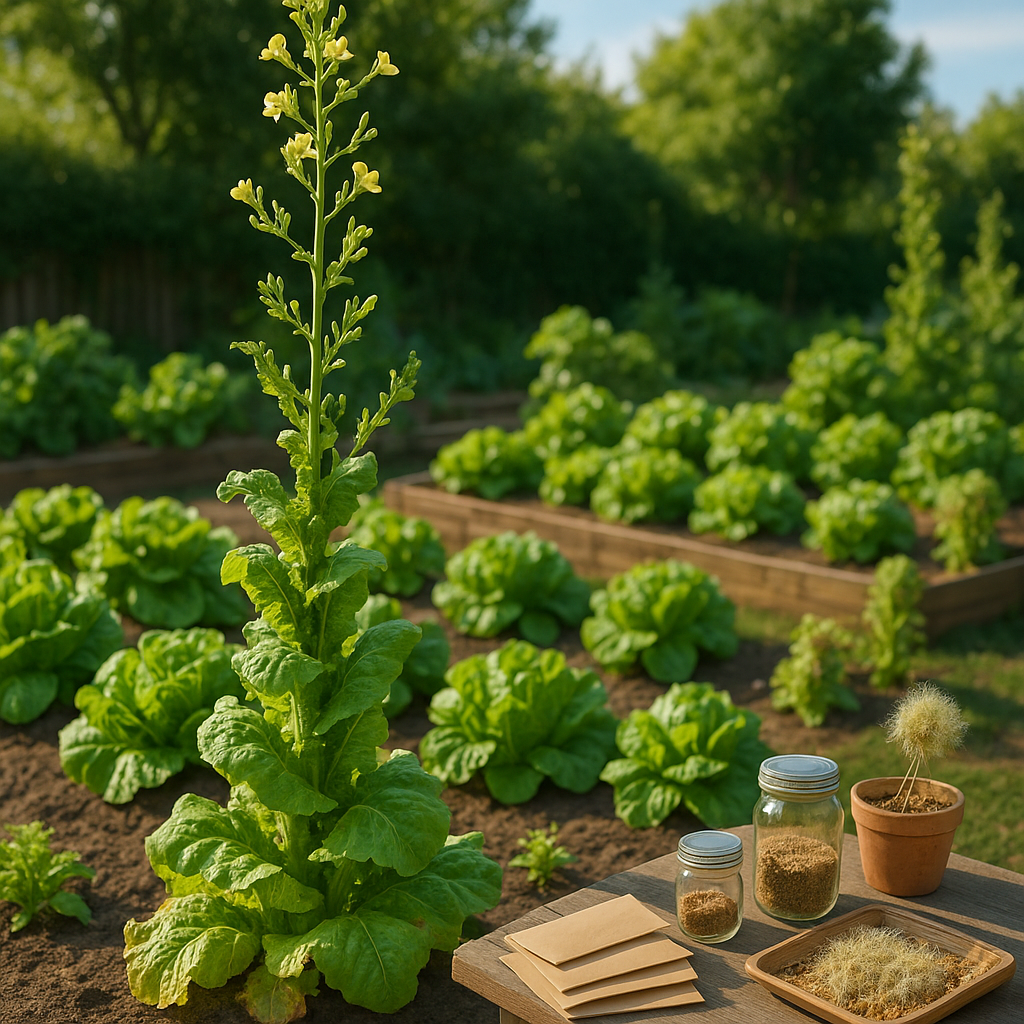Why Save Lettuce Seeds?
Saving lettuce seeds is a smart move for gardeners who want to boost sustainability and cut costs. When you save your own seeds, you can grow next season’s lettuce without buying new packets—saving money and reducing packaging waste. Saving your favorite varieties also means you’re not at the mercy of store availability; if a company discontinues a type you love, you can still grow it in your backyard.
Lettuce is perfect for seed-saving beginners because it has “perfect” flowers (meaning each flower contains both male and female parts) and doesn’t cross-pollinate easily, so what you save is what you get.
Another advantage of saving lettuce seeds is the ability to select the healthiest and best-tasting plants each year. Over time, by keeping seeds only from the lettuces that thrive in your unique soil and climate, you gradually adapt your crop to your local conditions. This process—called “landrace breeding”—means your lettuce becomes more resilient to local pests, weather, and diseases.
So, saving seeds isn’t just practical; it helps build a garden that’s better suited to you and more self-sustaining with each passing season.
Understanding the Lettuce Life Cycle
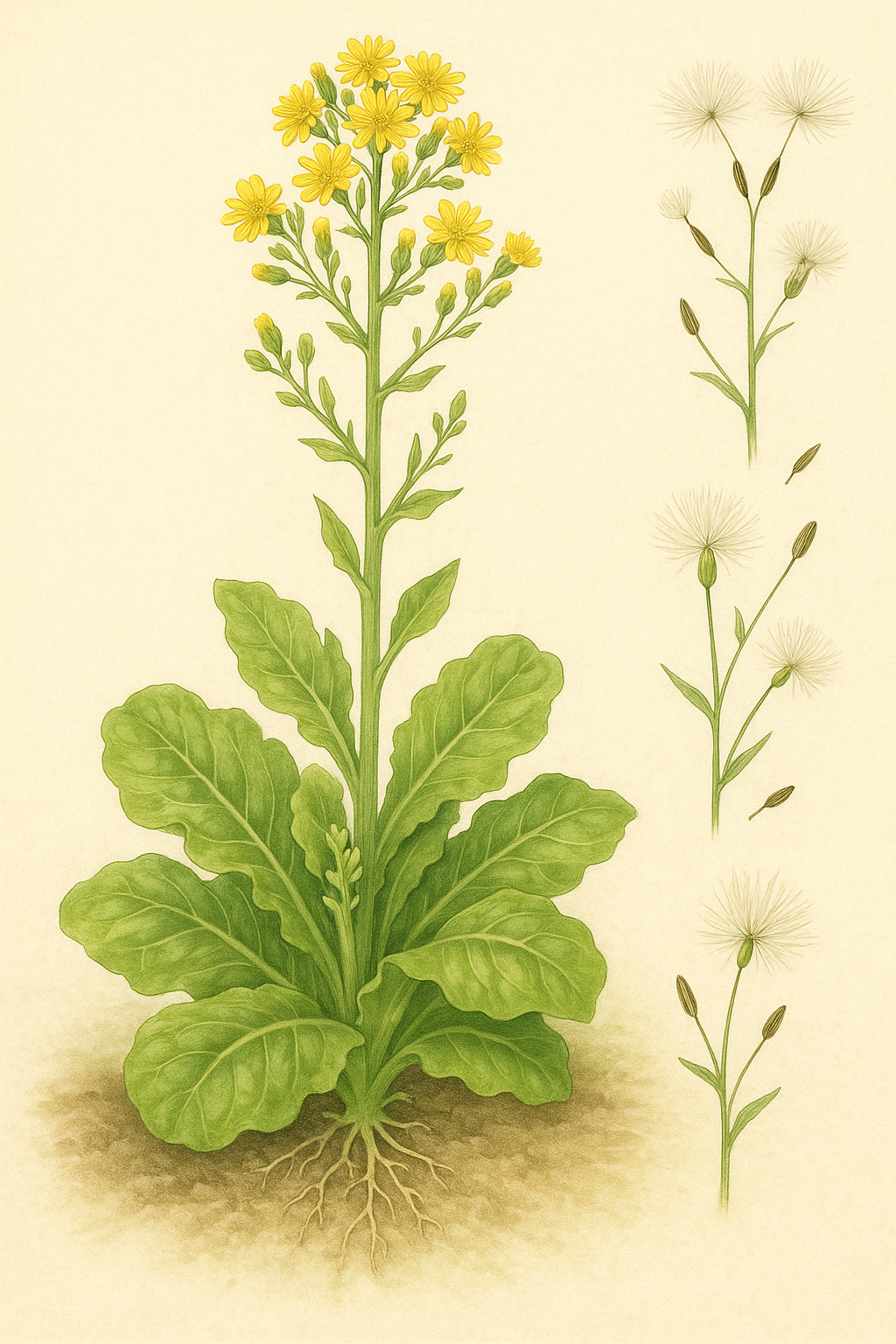
Lettuce goes through several distinct stages in its life cycle, but bolting and flowering are especially important for gardeners to recognize. Bolting occurs when lettuce shifts from leafy growth to producing a tall flower stalk, often triggered by warmer weather or longer days. During bolting, the center stem elongates rapidly, and the leaves may become bitter and less palatable.
Soon after, small yellow flowers appear at the top of the stalk. Each flower can develop seeds, which typically happens late in the growing season after flowering. As seeds form, the plant often looks tall, spindly, and scraggly, with leaves much smaller than before.
Lettuce seeds mature in small, fluffy heads that resemble tiny dandelions. Once these heads dry and turn brown, they are ready to be harvested. Lettuce is primarily self-pollinating, meaning individual flowers can fertilize themselves, so you don’t need multiple plants to collect seeds. However, occasional cross-pollination can occur if different varieties flower nearby.
For home gardeners, understanding these stages helps you decide the best time to harvest leaves versus collecting seeds for the next season, ensuring a healthy lettuce crop cycle.
How to Tell When Lettuce Is Ready for Seed Saving
Knowing when to save lettuce seeds starts with spotting signs that your plant is bolting—this is when it stretches a tall stalk and sends up clusters of yellow flowers. Once your lettuce reaches this stage, the flowers will bloom, then dry out and leave behind fluffy seed heads, similar to tiny dandelions.
The seeds are ready to harvest when the heads are dry, and the fluffy pappus (those white tufts) easily separates from the plant. To check, gently tug on a seed head; if the seeds break away and feel firm to the touch, they’re ready to collect.
For the best seed quality, select plants that had upright, healthy leaves and resisted bolting as long as possible, since these traits often pass on to the next generation. Avoid saving seeds from lettuce that showed signs of disease, bitterness, or other undesirable traits—this helps ensure a better crop in your next planting.
Step-by-Step Guide to Harvesting Lettuce Seeds
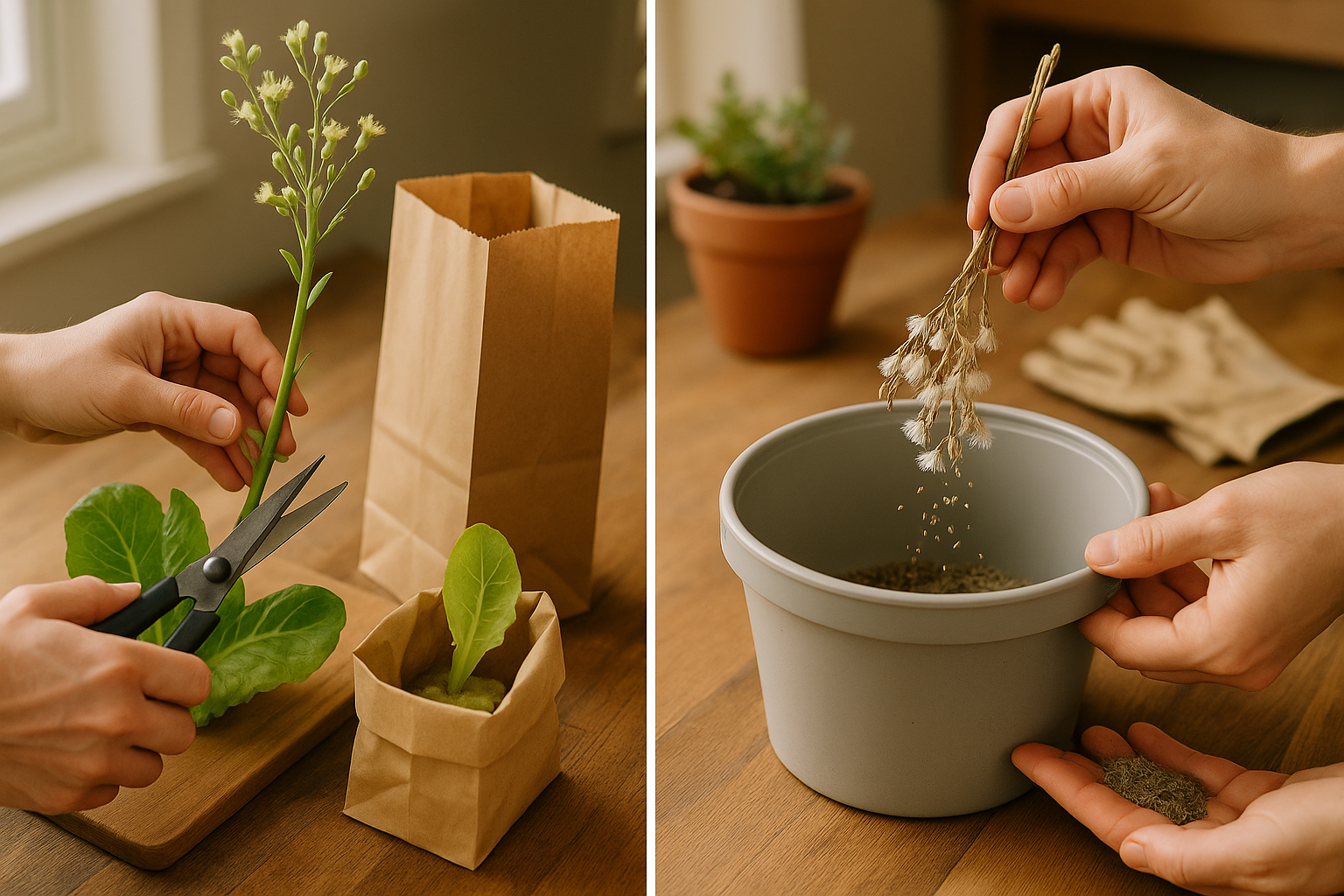
Harvesting lettuce seeds is a satisfying process that can save you money and keep your garden thriving year after year. Start by letting a few healthy lettuce plants bolt. This means allowing them to grow tall and produce flower stalks—a clear sign they’re entering seed production.
Watch as small yellow flowers appear, then fade into fluffy, dandelion-like seed heads over several weeks. Patience is key here; wait until the seed heads look dry and the seeds easily detach when brushed with a finger. However, don’t wait so long that wind or rain dislodges them.
Methods for Harvesting Seeds
There are two easy ways to harvest your seeds:
- Gently bend the stem over a clean bucket or paper bag and shake to release mature seeds.
- For more control, cut the entire seed stalk and place it upside down in a paper bag to finish drying indoors.
Avoid collecting seeds in damp weather, as moisture can lead to mold, ruining your seeds. Always dry seeds in a warm, well-ventilated spot for about a week before storing them in sealed envelopes or jars.
Common Mistakes to Avoid
- Harvesting too early—immature seeds won’t sprout.
- Shaking too forcefully, which scatters seeds everywhere.
By following these careful steps, you’ll maximize your lettuce seed harvest and enjoy new crops every season.
Cleaning and Storing Lettuce Seeds
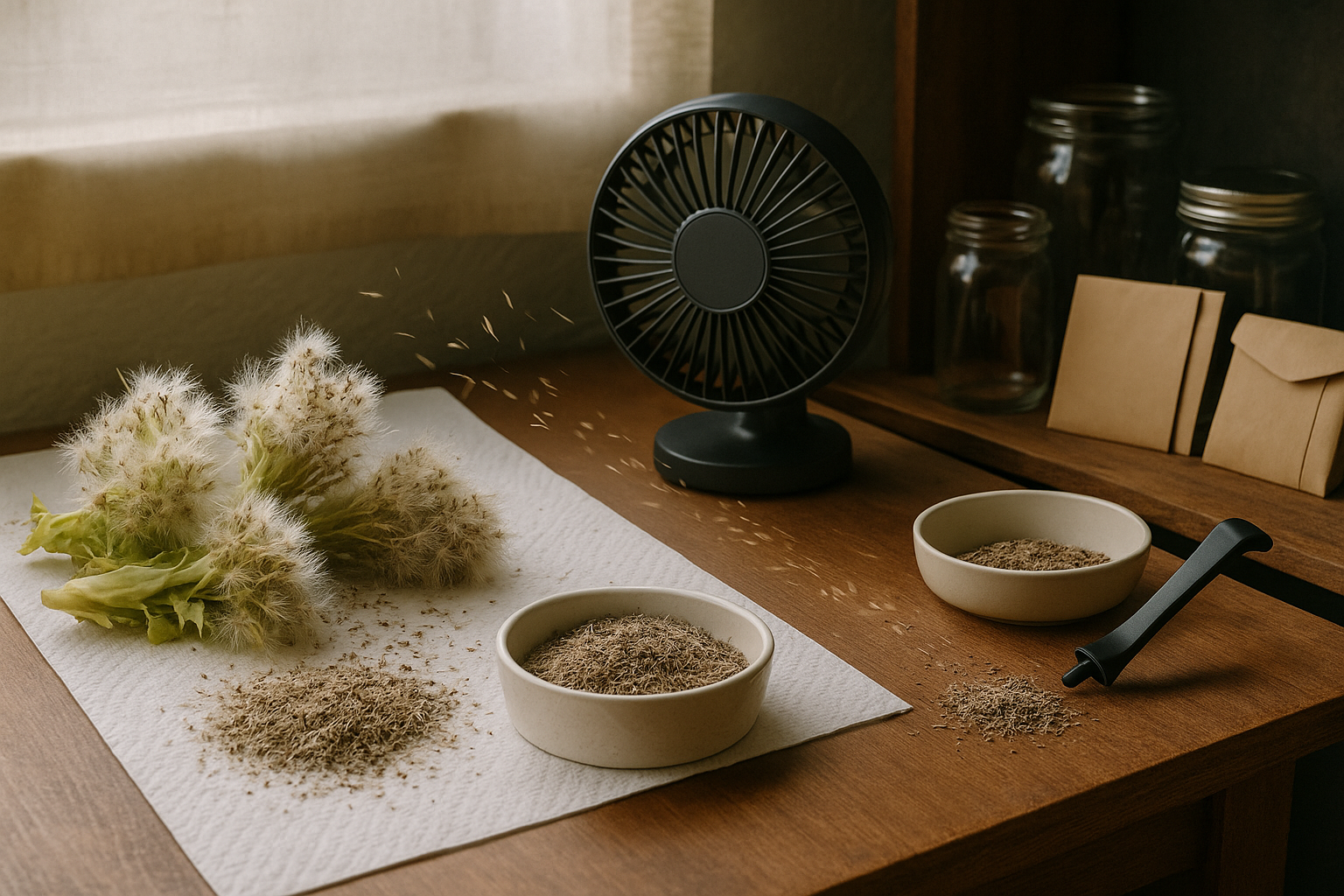
After harvesting lettuce seeds, it’s essential to dry them thoroughly to prevent mold. Spread the seed heads in a shallow tray or on a clean paper towel, and keep them in a warm, dry, and well-ventilated space for about a week. Gently turn them daily to speed up the drying process.
Once the seeds are crisp and fully dry, remove them by rubbing the seed heads between your hands or rolling them gently—this helps separate the seeds from the chaff. For finer cleaning, pour the seed and chaff mixture in front of a fan set on low, or lightly blow across them; the lighter chaff will blow away while the heavier seeds stay behind.
Store your cleaned lettuce seeds in a labeled, airtight container such as a glass jar, film canister, or resealable bag. Keep the container in a cool, dark, and dry location. Classic seed envelopes also work if humidity is low. Don’t forget to label each container with the seed type and collection date.
Lettuce seeds typically stay viable for about three to six years. To check viability, place ten seeds between damp paper towels and keep them warm—if most sprout within a week, your seeds are still good to use next season.
Tips for Growing Lettuce from Saved Seeds
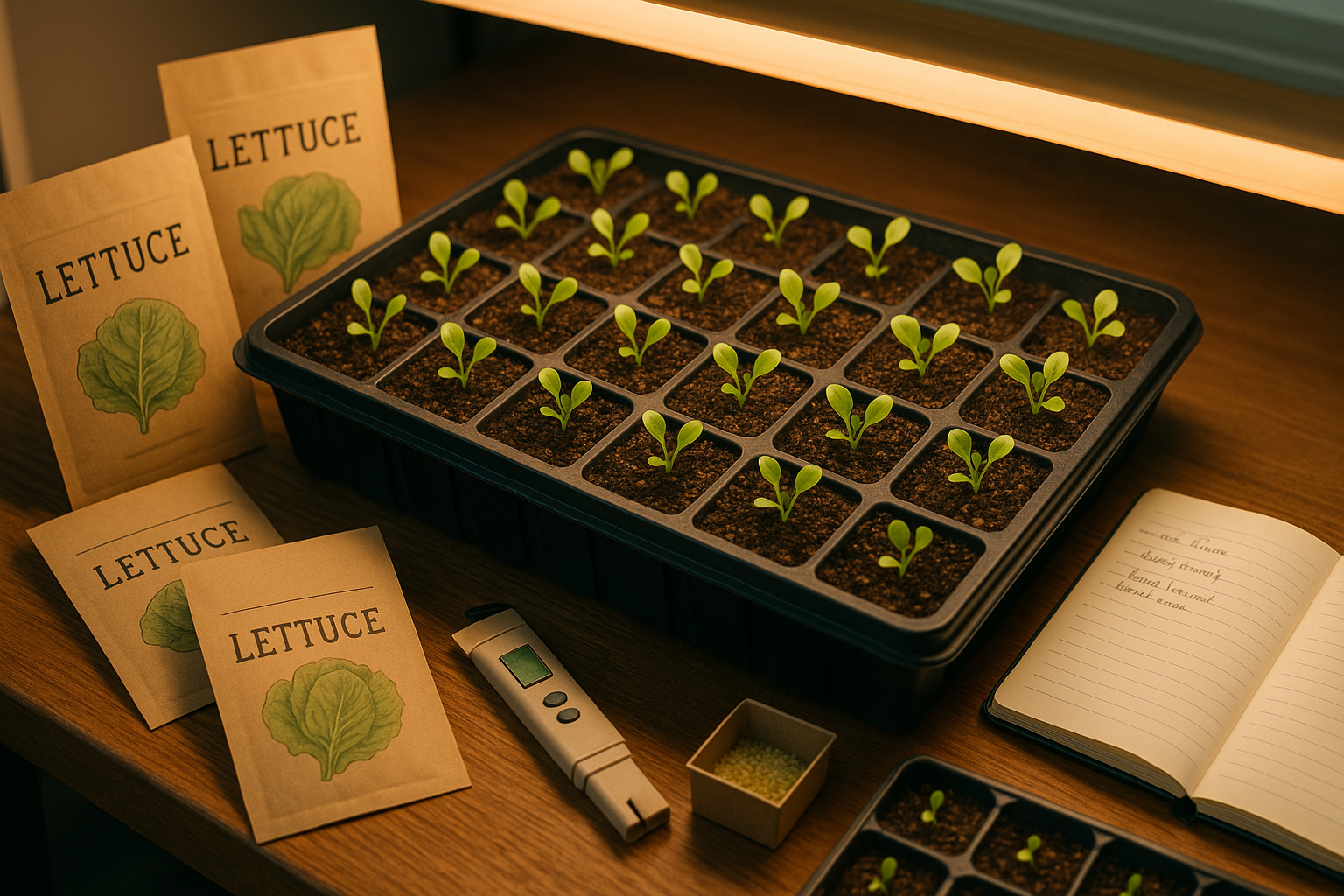
Growing lettuce from seeds you’ve saved is both rewarding and budget-friendly, but it does require some extra care. When sowing saved seeds, start them in trays indoors or directly in loose, moist soil—don’t bury them too deep, as lettuce prefers light for germination.
Expect varied germination rates, since home-saved seeds can be less uniform compared to store-bought packets. Thin the seedlings after they sprout, choosing the strongest to ensure healthy growth.
Because saved seeds might show differences in texture or taste, keep track of which plants produce the best heads—jot notes about leaf shape, growth speed, and flavor. Over a few seasons, you can gradually breed lettuce that suits your local climate and personal preferences.
Water regularly, but avoid over-soaking, and provide some afternoon shade—a little extra attention helps those home-collected seeds thrive. By noting what works, you’ll turn each planting into a learning experience for better crops year after year.
Common Problems and FAQs
Many gardeners encounter common challenges when saving and growing seeds, with cross-pollination, off-types, and poor germination topping the list of concerns.
Cross-pollination happens when pollen travels from plant to plant—say, between two different squash varieties—creating unpredictable offspring that may not resemble the parent. To avoid this, try planting different varieties farther apart and consider using physical barriers like row covers.
Off-types, or plants that grow differently than expected, usually result from accidental cross-pollination or genetic diversity. Rather than seeing this as a mistake, think of it as a fun opportunity for experimentation.
Poor germination often comes from storing seeds in damp conditions, letting them overheat, or allowing pests to get to them. Store seeds in a cool, dry, airtight container—glass jars with tight lids in a dark closet work well.
Don’t be discouraged by minor setbacks: seed saving is a learning process, and even experienced gardeners get surprises. Try different storage solutions, sow a few extra seeds as backups, and share your harvest with friends or fellow gardeners.
Exchanging seeds not only expands your collection but also fosters a supportive gardening community—a win for everyone!
